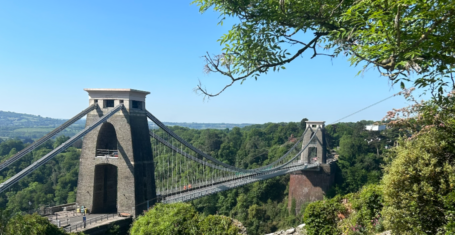
Lift-off for Bristol University polymer samples bound for the International Space Station
Bristol University is among 15 research teams to test the newly developed space materials in Earth’s orbit
On Tuesday (5th November), researchers and students at the University of Bristol sent four polymers to the International Space Station (ISS) for testing.
Launched by NASA’s Space X aircraft, these newly developed space materials will be attached to the front of the ISS and exposed to rigorous environmental conditions of low Earth orbit.
If successful, this research will help inform the material make-up of developing space technology and the materials could be used to build future space stations or spacecraft.
This project has included the efforts of senior researchers and specialists alongside several Aerospace Engineering undergraduates at Bristol Uni, whose final year research projects have been linked to the space materials mission.

Preparation of one of the Euro Material Ageing’s experiments for launch. Credit: Centre National d’Etudes Spatiales/Comat.
The samples will be placed on the Bartolomeo platform, on the ISS, and over the next 12 to 18 months, they will orbit Earth 9,000 times at speeds of 17,000 mph.
Dr Ali Kandemir, Senior Research Associate at the University of Bristol, commented on the importance of developing materials that are sustainable as well as resilient.
His extensive research, supported by the UK Space Agency, on galactic cosmic radiation assesses the potentially devastating impact on future societies without such protection.
He said: “We want materials that are resilient in the space environment and, importantly, materials that can shield humans from that radiation.
“We also want to make these materials sustainable, so that when they reach the end of their life they can be recycled and used again for the same purpose.”
Most Read
All four laboratory-made polymers heading to the ISS are the result of University of Bristol research, and one is patented. Each of these has been reinforced with carbon fibres, and two contain nanoparticles.

The ISS – the red ringed area indicates the likely location of the SESAME module on the Bartolomeo platform. Credit: NASA (jsc2021e064215_alt (Dec. 8, 2021), photograph taken by ESA astronaut Thomas Pesquet).
During their time on the ISS, these materials will have to battle severe and fluctuating temperatures, ranging from as low as -150ºC to as high as +120ºC.
The inaccessibility of their location on the Bartolomeo platform means the samples cannot be repaired whilst onboard. Materials must be capable of withstanding space debris moving seven times faster than a bullet.
Ian Hamerton, Professor of Polymers and Sustainable Composites at Bristol Uni, said: “Space is the most challenging environment for which to design new materials. You’re pitting your materials expertise, skills and ingenuity against extremes of temperature, mechanical stress, radiation, high speed impacts and more.
“The opportunity to test our materials in the proving ground of space is priceless and will help our University of Bristol scientists on the ground improve fibre-reinforced materials for next-generation space missions.”

Part of the team who facilitated the launch of new space materials. Credit: Bristol University.
Many organisations facilitated the success of this five-year project, including the NCC, UKSA, ESA and Oxford Space Systems.
One collaborator, Prof Kate Robson Brown, Vice-President for Research, Innovation and Impact at University College Dublin, spoke about how exciting this project is to come to life after five years of hard work.
She said: “I am proud to be part of this mission, and to be working with the multidisciplinary and multisector research team to deliver integrated real world and digital testing for innovative materials which will help to drive growth in the new space economy.”
Featured image via NASA (jsc2021e064215_alt (Dec. 8, 2021), photograph taken by ESA astronaut Thomas Pesquet) and Bristol University.


















